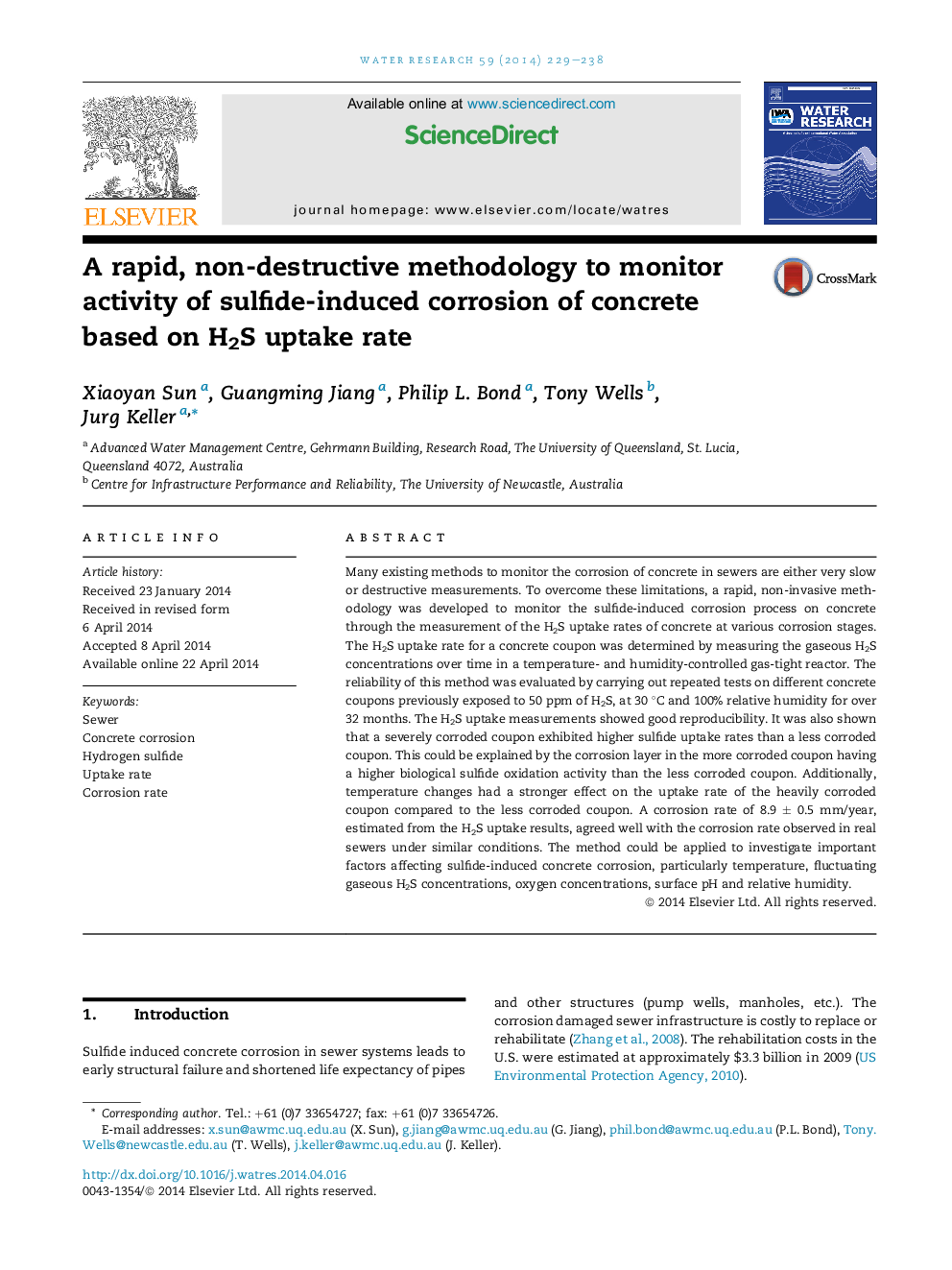| Article ID | Journal | Published Year | Pages | File Type |
|---|---|---|---|---|
| 4481542 | Water Research | 2014 | 10 Pages |
•Rapid, non-invasive method allows monitoring of sulfide-induced concrete corrosion.•Excellent reproducibility over time and for broad range of H2S concentrations.•Method shows influence of various factors e.g. state of corrosion, temperature etc.•Maximal corrosion rates of concrete can be estimated from H2S uptake rates.
Many existing methods to monitor the corrosion of concrete in sewers are either very slow or destructive measurements. To overcome these limitations, a rapid, non-invasive methodology was developed to monitor the sulfide-induced corrosion process on concrete through the measurement of the H2S uptake rates of concrete at various corrosion stages. The H2S uptake rate for a concrete coupon was determined by measuring the gaseous H2S concentrations over time in a temperature- and humidity-controlled gas-tight reactor. The reliability of this method was evaluated by carrying out repeated tests on different concrete coupons previously exposed to 50 ppm of H2S, at 30 °C and 100% relative humidity for over 32 months. The H2S uptake measurements showed good reproducibility. It was also shown that a severely corroded coupon exhibited higher sulfide uptake rates than a less corroded coupon. This could be explained by the corrosion layer in the more corroded coupon having a higher biological sulfide oxidation activity than the less corroded coupon. Additionally, temperature changes had a stronger effect on the uptake rate of the heavily corroded coupon compared to the less corroded coupon. A corrosion rate of 8.9 ± 0.5 mm/year, estimated from the H2S uptake results, agreed well with the corrosion rate observed in real sewers under similar conditions. The method could be applied to investigate important factors affecting sulfide-induced concrete corrosion, particularly temperature, fluctuating gaseous H2S concentrations, oxygen concentrations, surface pH and relative humidity.
Graphical abstractFigure optionsDownload full-size imageDownload high-quality image (144 K)Download as PowerPoint slide
